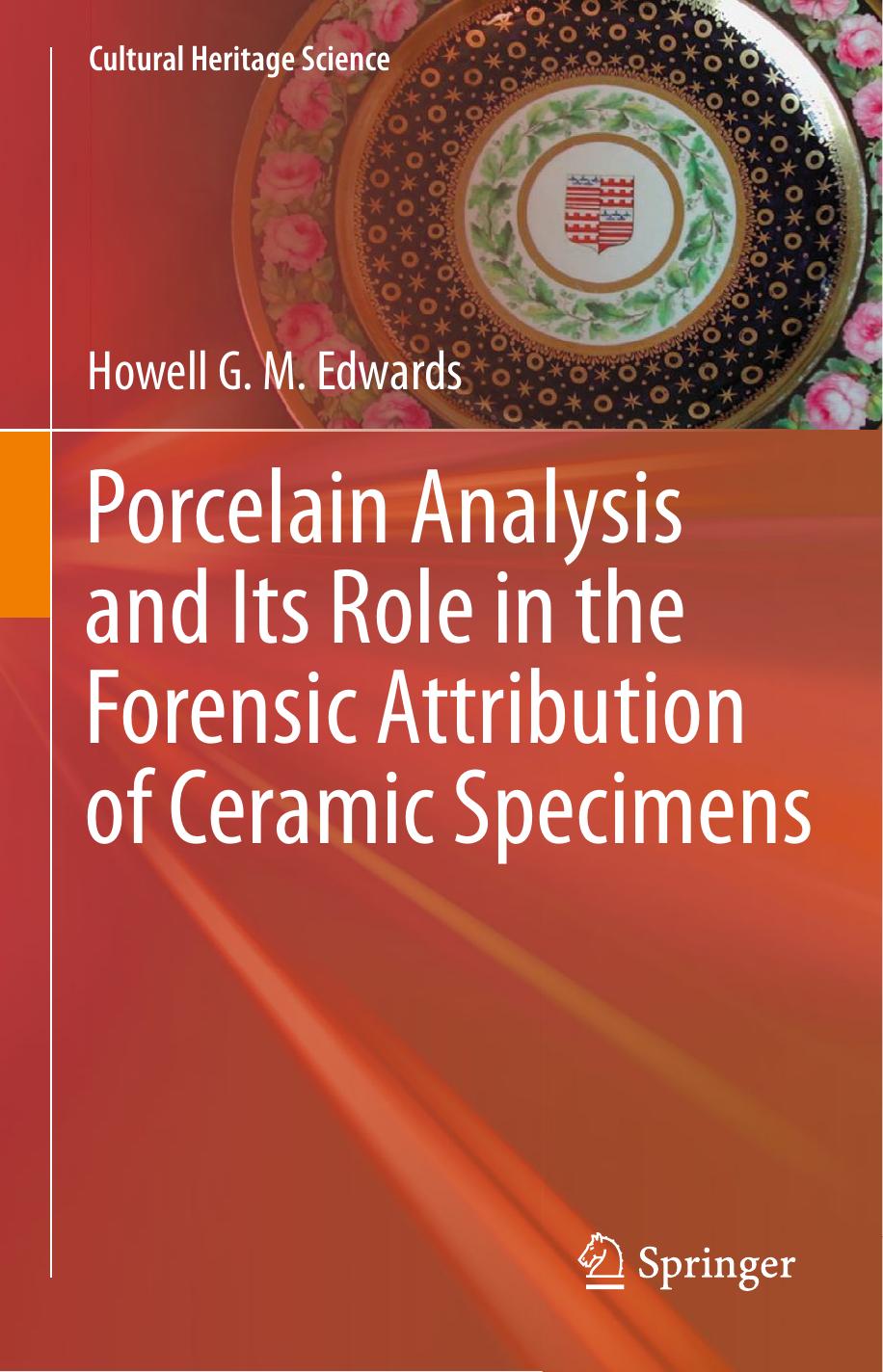Porcelain Analysis and Its Role in the Forensic Attribution of Ceramic Specimens by Howell G. M. Edwards

Author:Howell G. M. Edwards
Language: eng
Format: epub, pdf
ISBN: 9783030809522
Publisher: Springer International Publishing
7.3.1 The âFactory Aâ Marked Porcelains
The origin of this name for a special group of hard paste English porcelains, which now number between 30 and 40 pieces of hard paste polychrome wares, can be attributed to Arthur Lane (Ramsay et al. 2004b); it was realised that they were harder than other English hard paste porcelains and it was suggested that they were therefore in a hybrid category. The assignment of several English porcelain factories by connoisseurs to the source of A-marked porcelains has been occurring for many years, including, Vauxhall, Kentish Town, Stourbridge, Chelsea, Limehouse and Pomona. In 2006, The Museum of London carried out archaeological excavations of the Bow porcelain manufactory in Stratford, East London, and unearthed a large number of glazed and unglazed fragmented specimens, most of which were undecorated. To the northeast of the excavated site a waste pit was found which yielded 14,704 porcelain shards (total weight 180 kg), some 40% comprising glazed blue and white wares, 45% glazed wares in the white and some 15% in biscuit porcelain. Stylistically, the waste pit shards were all assigned a date to the early 1750s. The Bow porcelain connoisseur, Anton Gabszewicz, noted a particular resemblance between a glazed, undecorated excavated pot lid from the Bow site and the lid on a Factory A-marked teapot which resided in the ceramics collection at the Victoria & Albert Museum, South Kensington, London. To test the hypothesis that Factory A and Bow were possibly one and the same factory, small specimens were removed from this key fragmented pot lid specimen and also from four other shards, two of which being glazed white and undecorated, also matched specimens of cups and teabowls in the Victoria & Albert Museum Collection (Ramsay et al. 2001, 2003) and the conclusion was that the composition was compatible with the Bow first patent specification, a low lead body paste and glaze , using Cherokee clay. The Frye Tribute specifically mentions the production of Bow porcelain figures using a white clay imported from the Cherokee lands in South Carolina . In the first 1744 patent Bow porcelain the body recipe comprised a variable mixture of Cherokee clay and lime alkali glass frit in the ratio 1:1 then from 2:1 up to 8:2, the latter corresponding to a 80% china clay and a 20% lime alkali glass frit. Ramsay & Ramsay in their analyses of specimens of first patent Bow porcelains have encountered a china clay: lime alkali glass frit mixture of composition 7:3 of china clay to glass, i.e. a maximum of 70% china clay in the mixture. Further, in another study (Ramsay et al. 2004a) described their re-creation of the Heylyn and Frye first patent Bow porcelain experimentally from a Cherokee clay and alkali lime-glass frit mixture composition fired initially at 950 °C, glazed with a clay-glaze mixture and then re-fired at 1280 °C, They were also able to identify mineralogical phases comprising calcium plagioclase and two distinct glassy phases which comprised remnant alkali lime glass frit and
Download
Porcelain Analysis and Its Role in the Forensic Attribution of Ceramic Specimens by Howell G. M. Edwards.pdf
This site does not store any files on its server. We only index and link to content provided by other sites. Please contact the content providers to delete copyright contents if any and email us, we'll remove relevant links or contents immediately.
Kathy Andrews Collection by Kathy Andrews(11730)
The remains of the day by Kazuo Ishiguro(8822)
Paper Towns by Green John(5089)
Spare by Prince Harry The Duke of Sussex(5072)
Industrial Automation from Scratch: A hands-on guide to using sensors, actuators, PLCs, HMIs, and SCADA to automate industrial processes by Olushola Akande(4980)
The Body: A Guide for Occupants by Bill Bryson(4974)
Machine Learning at Scale with H2O by Gregory Keys | David Whiting(4179)
Be in a Treehouse by Pete Nelson(3947)
Never by Ken Follett(3790)
Harry Potter and the Goblet Of Fire by J.K. Rowling(3774)
Goodbye Paradise(3728)
Into Thin Air by Jon Krakauer(3313)
The Remains of the Day by Kazuo Ishiguro(3293)
The Cellar by Natasha Preston(3261)
The Genius of Japanese Carpentry by Azby Brown(3224)
Fairy Tale by Stephen King(3220)
120 Days of Sodom by Marquis de Sade(3180)
The Man Who Died Twice by Richard Osman(2997)
Drawing Shortcuts: Developing Quick Drawing Skills Using Today's Technology by Leggitt Jim(2996)
